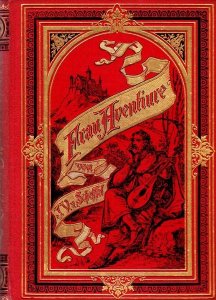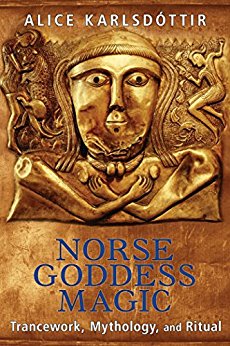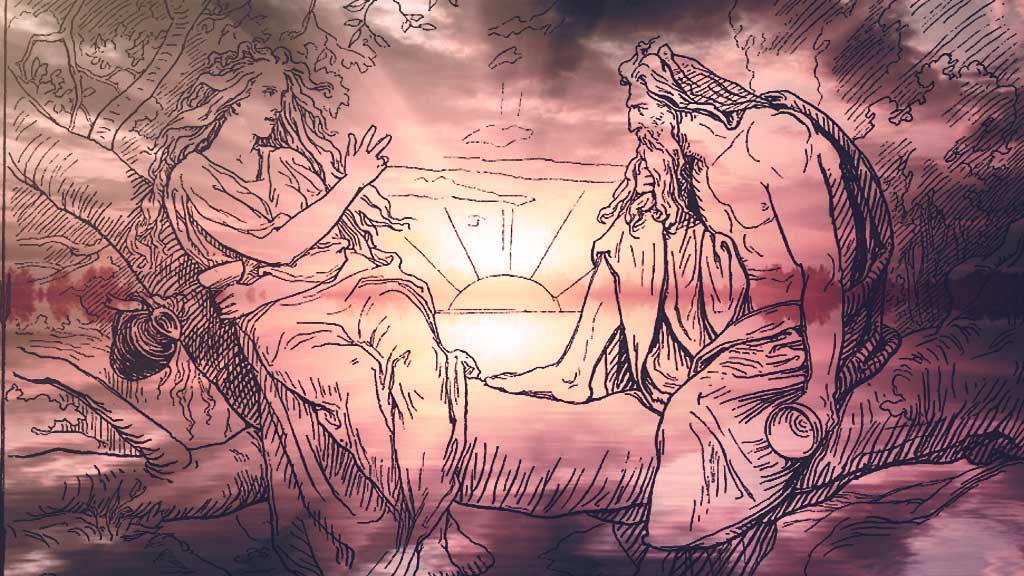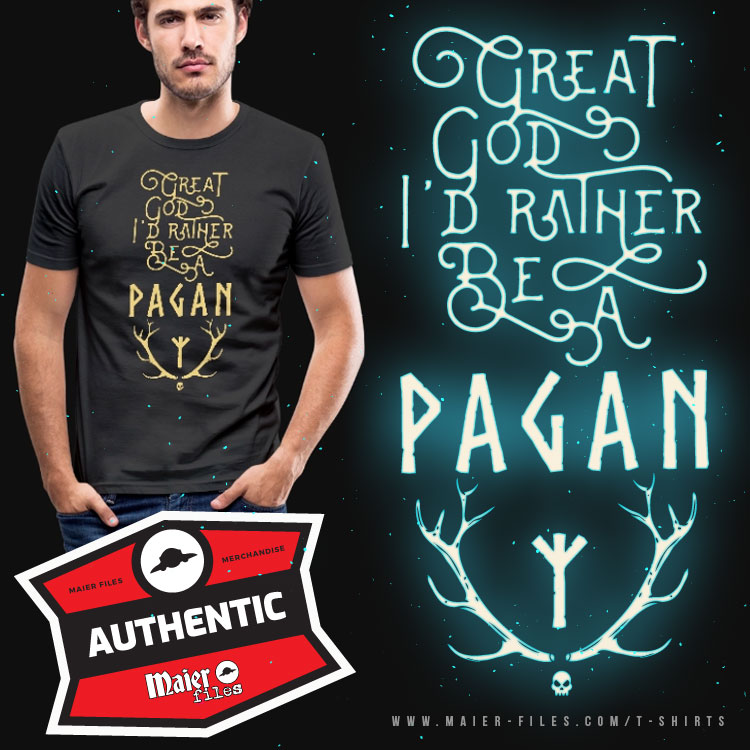In the Maier files puzzle and quest everything adds up to something and there are several intertwined levels that will eventually result in solving the Otto Maier enigma. One clue and deeper meaning can maybe be found in the history of Saga because a Saga records the history of a people’s soul.
Saga is one of the Norse goddesses who are numbered among the Asynjur. Snorri (Gylfaginning, ch. 35) lists her as the second goddess and states that she lives in a great dwelling called Sokkvabekk. In the Grímnismál we learn that Sokkvabekk is the fourth hall in Asgard, surrounded by cool waves, and that every day Odin and Saga drink there gladly together from cups of gold.
Although we are not told many details about Saga, there is still much that can be inferred from the sparse information available. Her name, while technically not the same word as the feminine Icelandic noun saga, undoubtedly comes from the same root, segja, meaning “to say or tell.” The Old Norse word saga means “story,” “tale,” or “history,” and in modern German and English it still means “legend” or “myth.”
More specifically, we use it to refer to heroic narratives written in the twelfth or thirteenth centuries that chronicle the feats of historical or legendary figures in Scandinavian culture or modern narratives written in the same style.

A saga is more than mere history—it blends fact with legend, narrative with poetry. The pre-Christian Norse made no distinction between factual, historical works and fictional, literary ones. Instead, people sought to record all aspects of reality, combining factual, artistic, and spiritual truths into an organic whole.
They had no concept of fiction but regarded all tales as true on a certain level. To them, legends were as real as documented occurrences, and therefore they did not distinguish between the two in their sagas. A saga records the history of a people’s soul rather than mere events and thus is a link between the ancestors and the present and future generations.
The goddess Saga, then, can be seen as a personification of these stories, and indeed she is not the only feminine figure to be used to personify a legend. The Greek muse Klio personified history, although what Saga represents would probably encompass several of the muses’ functions.
In Germany, when people took turns telling stories, they said the Märlein went around from house to house. This game of passing around the telling of myths or fables was also practiced by the ancient Greeks and Romans. In Norway parents still tell their children eventyr (“fairy tales,” from the ON ævintyr and related to the English adventure).

The poets of the thirteenth century captured the spirit of adventure in their verse. In their Frau Aventiure tales, Dame Aventiure wandered the countryside on foot, knocking at the doors of the minstrels and demanding that they let her in. Peter Suchenwirt, late-fourteenth-century Austrian poet, describes a vision of Dame Aventiure.
In it, she appears in a forest grove and says she has traveled throughout the land, visiting kings and lords as Frau Ehre’s messenger, and now has come to make her report. Then, putting a gold ring on her finger, she disappears. Ehre is the German word meaning “honor,” “reputation,” or “glory,” and, like Saga, it is a feminine noun.
Frau Ehre can be compared to Frigg, the queen of Heaven, who functions as a dispenser of glory much as an earthly queen would and who, as Lady of the Asynjur, is Saga’s leader. Also, spinning and storytelling, the special functions of these two goddesses, have long been connected in the lore of the dísir and wisewomen of Germanic culture.
Saga has often been compared to Frigg, many seeing her as merely another name or guise for Frigg herself and not a separate goddess at all. Some sources claim that Saga is Frigg because Odin, Frigg’s husband, drinks with Saga daily in her hall. Given Odin’s reputation with women, I find this reasoning less than persuasive. But what is the relationship between Odin and Saga?
Odin, in his function as poet and giver of divine inspiration, represents here all writers and poets who must return to the primal legends and the collective soul of their people to derive that inspiration that is the mark of truly great poetry.
Vague as the mythical references to Saga are, she has managed to leave an impression on the modern Norse mind, as shown by a line from the Norwegian national anthem, “Ja, vi elsker dette landet” (“Yes, we love this land”):
Og den saganatt som senker,
drømmer på vår jorð.
(And the night of Saga sinking
dreams upon our land.)

Granted, they may have been thinking of saga, the tale, rather than Saga the goddess, but the images of sinking and dreams are highly reminiscent of Saga’s realm of memories, the Sinking Brook.
Viewed symbolically, Saga’s hall represents the stream of the unconscious, a typical meaning assigned to water in both myth and psychology. Again, Saga’s dwelling is the source of our inspiration, our songs and stories that ring true and have the seeds of greatness in them.
Odin, wise as always, knows he needs to periodically drink from this well of collective memory to refuel his energies. In return, the father of heroic deeds supports, favors, and protects history and the past, and through the poet’s song remembers and glorifies it. The cup from which they drink is both the cup of poetic inspiration and the cup of immortality.
The waters of Saga’s hall can also represent the Well of Urd, where the spiritual might of the past resides. The Germanic concept of time is dominated by the past, which is seen as an ever-growing accumulation of experience that shapes and nurtures the present and into which all actions are constantly being interwoven.
src. Norse Goddesses Karlsdottir
![]()



